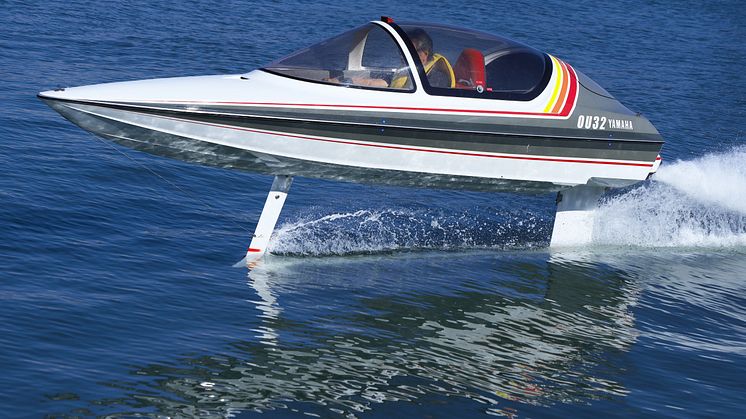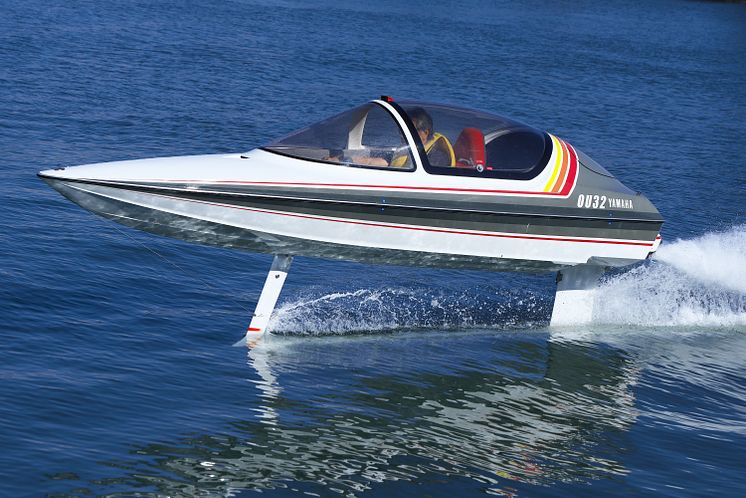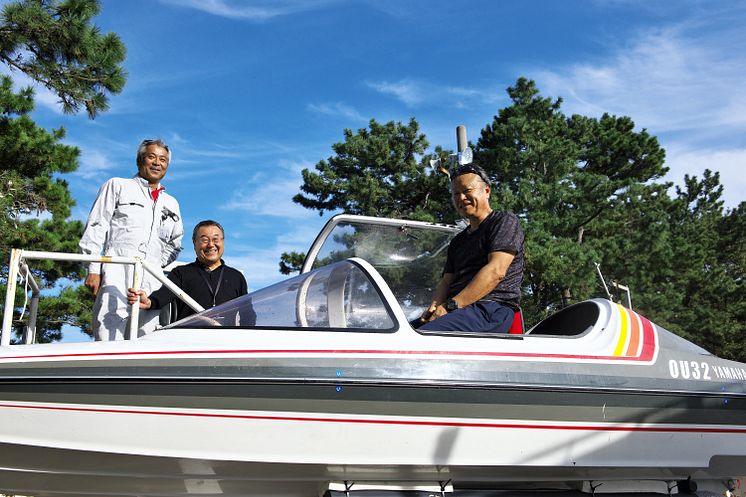
News -
Returning to the Water After 30 Years Yamaha Motor Newsletter (January 31, 2020 No. 77)
Coming up with new and original ideas, leveraging outstanding technologies and creating heart-moving designs are what drive uniquely Yamaha Monozukuri (creating products with an emphasis on craftsmanship and excellence), but none of these values and approaches took shape overnight. Each was arrived at through countless repetitions of trial and error while taking on and overcoming numerous new challenges.
Still, the pages of Yamaha Motor history have seen a good number of ideas and efforts that never came to fruition as products amid the changing wants and needs of the times. In some cases, the chance to bring them to market simply slipped away. But instead of letting the results of those efforts gather dust or fade into nothingness, why not learn from them and perhaps find inspiration for new products yet to be seen?
In this issue, we introduce one example of Yamaha’s own interpretation of “looking backward to go forward.”
Something Our Younger Boat Engineers Ought to Try Riding!

As the OU-32’s water-jet system propels the craft forward, its hydrofoils cause the hull to rise up and out of the water.
With a streamlined hull 4.8 meters in length and a canopy reminiscent of a fighter jet, the OU-32 looks almost like a futuristic vehicle many dreamed of as children. As the fun-looking craft skims across the lake and picks up speed, it slowly begins to rise out of the water until it is skating along the surface, its two struts slicing through the water.
This hydrofoil prototype was built at the Horiuchi R&D Lab, named for and led by the late designer and engineer, Kotaro Horiuchi. Horiuchi not only helped start Yamaha Motor’s boat business in 1960 but also worked on the design and development of boats throughout his entire career. The OU-32 prototype in particular was completed and displayed as a “dreamboat” at the Tokyo International Boat Show in 1988.
“We came across the actual thing when we were cleaning and cataloging a factory warehouse, and the discovery really made us want to try repairing it and then take it for a ride,” said some veteran employees. Most of them are test engineers in their 60s in the Boat Development Division of Yamaha’s Marine Business Operations.
“The theme for the project was ‘improving boating comfort.’ So by restoring a hydrofoil from the past and analyzing things as we went, the craft would serve as a platform for research into improving the comfort of watercraft, dramatically improving fuel consumption and exploring new ways to offer boating enjoyment,” they continue. “But to be honest, we came up with all that afterwards! When we actually saw the craft in the warehouse, we all really wanted to try riding it and also wanted the younger boat engineers to try riding it as well. That was our real motive!” they laugh.
A Free, Open and Playful Spirit of Monozukuri

The “dreamboat” hydrofoil was restored by five members of Yamaha’s Boat Development Division.
It took some two months to fully restore the craft based on the sole remaining blueprint. This ranged from fixing leaks and altering the seating arrangement to retrofitting the engine. When it was taken out on the water for a shakedown test, the engineers found out themselves that just as was reputed, the OU-32 took quite a bit of expertise to pilot, even for these veteran boat operators.
“The very fact that it’s so unique and difficult to pilot made us want to get the hang of it even more. Isn’t that often the case?” they posit. “Although we never had the opportunity to work with Horiuchi-san, the process of restoring this craft and then actually riding it gave us some real insights into the free, open and playful spirit of
Monozukuri the Horiuchi R&D Lab brought to its creations. Horiuchi-san and his team apparently dreamed of commercializing this hydrofoil, and had times been different, they might have discovered the right approach for successfully bringing it to market.”
Today, it is quite common to see hydrofoils used in designs for sailboats and a variety of watersports like boards for windsurfing and kitesurfing. But to have had the idea and Spirit of Challenge to try and adapt it to a powered personal watercraft over 30 years ago can surely be deemed an example of visionary foresight. It is by no means easy to operate the OU-32, i.e., getting it up on its hydrofoils and cornering while in that state, but the challenging nature of it brings an experience of
Kando* that entices you to pilot it again and again.
* Kando is a Japanese word for the simultaneous feelings of deep satisfaction and intense excitement that we experience when we encounter something of exceptional value.
|
Message from the Editor It’s not uncommon to read or hear stories about restoring old cars and motorcycles, so why are ones about restoring old boats so rare? And in this case, it’s a craft with a very unique hydrofoil design. The desire to restore and then pilot a craft like this is rather understandable for employees of a boat manufacturer, and even more so for Yamaha. Besides the free, open and playful spirit of Monozukuri in this example, I can’t help but feel a certain affinity for the curiosity and charisma that sparked this project. On a different note, we’ve released the first addition of the new decade to our Moving You short documentary series. This 16th entry covers the Parent-Child Motorcycle Class that Yamaha has been running since the 1980s, which gives elementary school age children the opportunity to try riding a motorcycle together with their parents/guardians. In a very real sense, the kids that attend this program are the riders of tomorrow, and having Yamaha be a part of the first ride a child takes is something that will stay with them forever. Naoto Horie |



